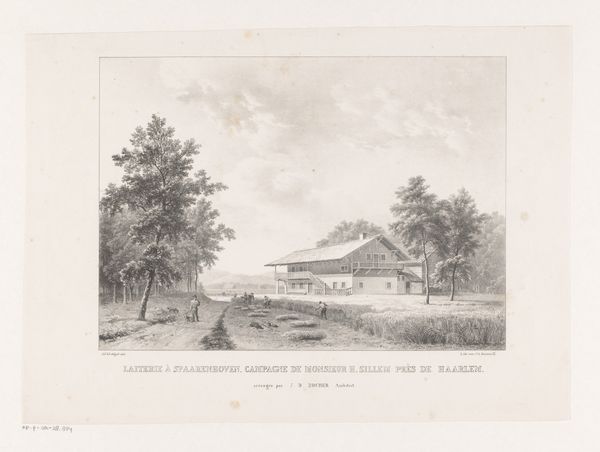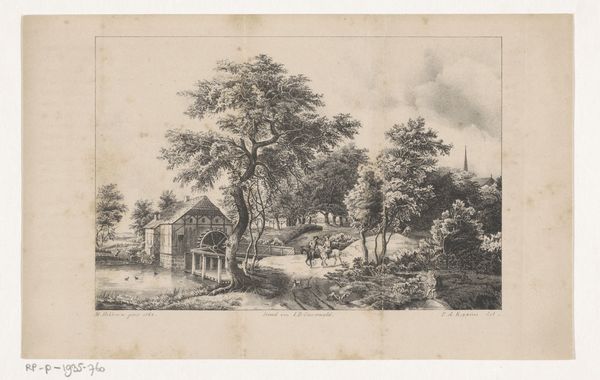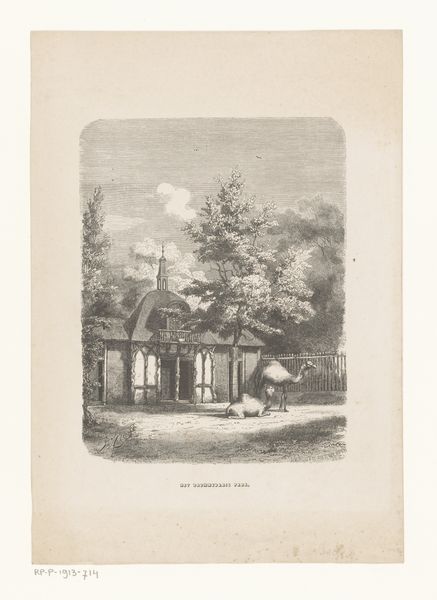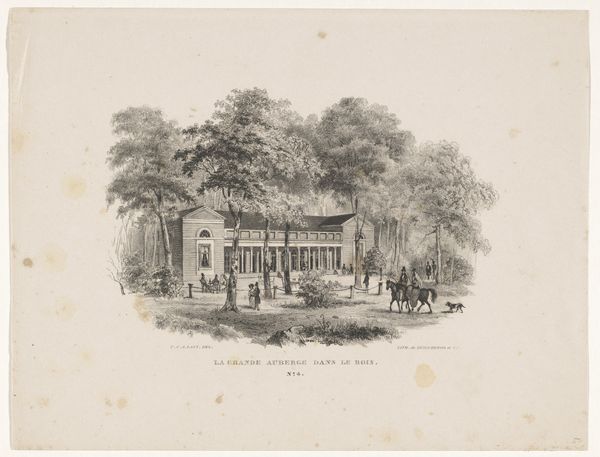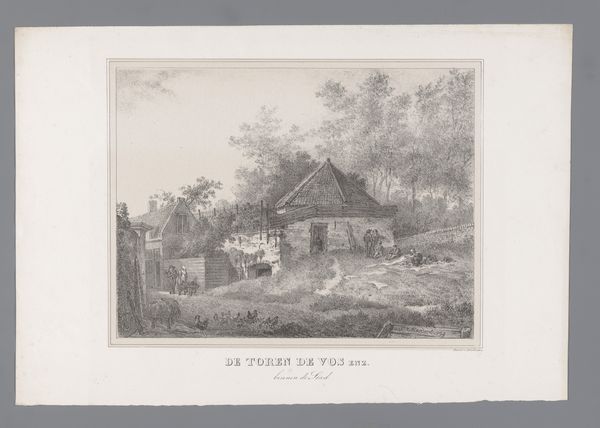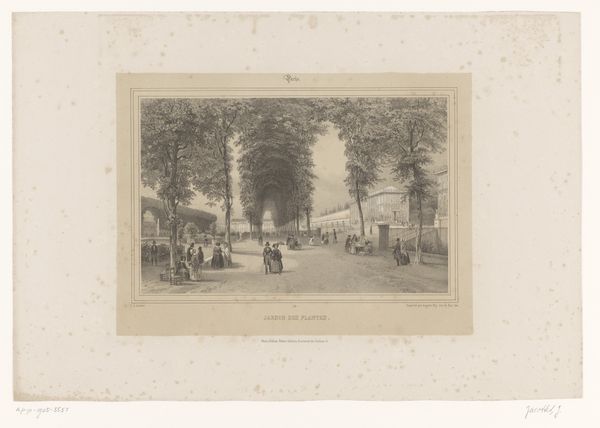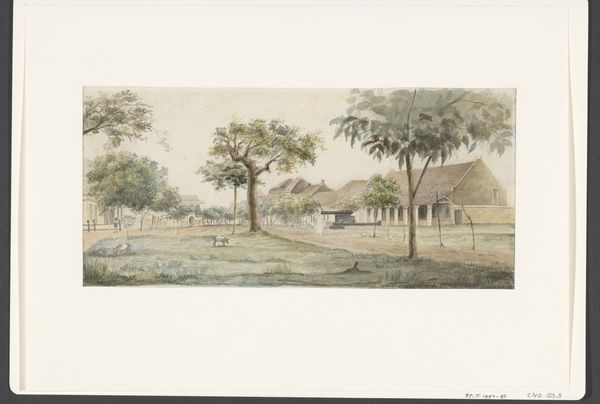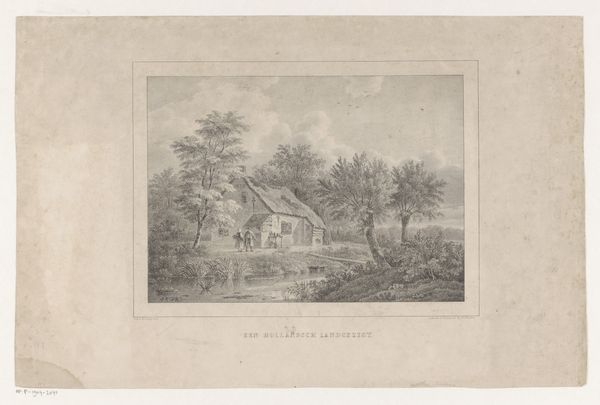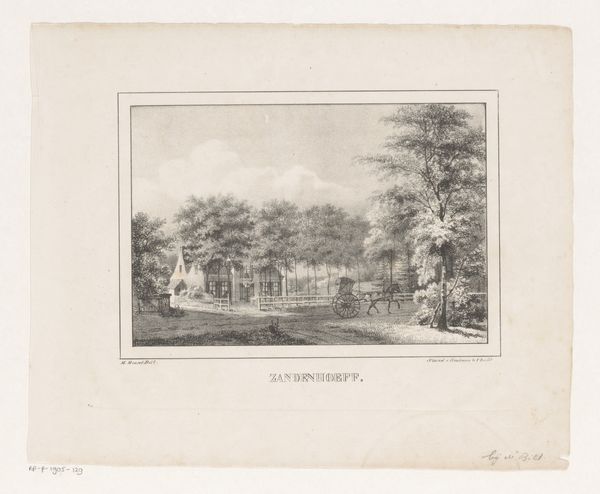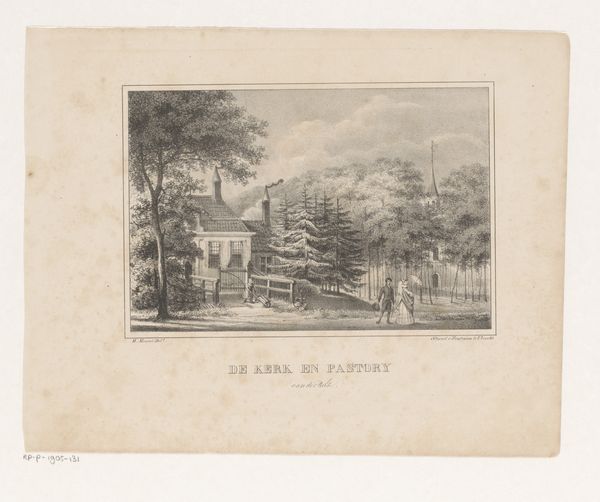
drawing, coloured-pencil, etching, paper, pencil
#
drawing
#
coloured-pencil
#
etching
#
landscape
#
paper
#
pencil
#
watercolour illustration
#
genre-painting
Dimensions: height 133 mm, width 220 mm, height 190 mm, width 266 mm
Copyright: Rijks Museum: Open Domain
Curator: Here we have Frederik Charles Theodorus Deeleman's "Gezicht op commandantswoning te Batavia," created sometime between 1870 and 1890. The artwork consists of drawing, etching and pencil with colour. Editor: It’s a placid scene, almost ghostly. A sepia-toned landscape, dominated by buildings with Greek-style columns, all softened by mature trees. It feels both stately and faded, doesn't it? I wonder how that mood was achieved. Curator: I'm immediately drawn to the representation of colonial power in the Dutch East Indies. The work illustrates the commander's residence in Batavia, which embodies Dutch colonial authority. The architecture itself conveys a message of dominance and control in the region. Editor: And consider the technique, too. The artist used colored pencils and etching on paper—a choice that allows for both delicate details and broad tonal washes. The blending suggests the softness wasn't accidental. There’s something unsettling about presenting imperial authority with such apparent gentleness, it feels a deliberate construction. Curator: Absolutely. These depictions are strategic; it's crucial to acknowledge the intended audience, both in the colony and back in the Netherlands. This reinforces Dutch identity through carefully chosen subject matter: grand residences within the tropical landscape of Batavia, and hints at Dutch adaptation, and control over their colony. Editor: Yes, that depiction also subtly omits certain parts of Batavia. By choosing to picture an orderly composition devoid of overt indications of oppression, the artist glosses over any social or labour struggles. Curator: This kind of idealized imagery serves the ongoing construction of an imperial image. It also reinforces prevailing notions about Dutch colonial identity. Editor: It's interesting how analyzing material choices and historical context brings out those loaded layers, which at first viewing look like such a gentle depiction. Curator: Indeed. Understanding the intended purpose of art allows us to uncover narratives, rather than just appreciating what we see in an aesthetic sense. Editor: Quite so. And it also means reconsidering the relationship between material and subject in creating social narratives.
Comments
No comments
Be the first to comment and join the conversation on the ultimate creative platform.
